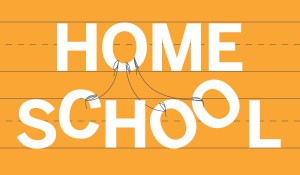As an instructional designer for Istation, my entire world these days revolves around ways to integrate technology, teaching, and learning.
One of the traps of educational technology is the tendency to use it to do exactly what wasn’t working in the classroom.
Not only do instructional designers have to be creative about the use of technology itself, but we have to be creative about our instructional approaches. The challenge when designing instruction specifically for use with technology tools is marrying the best instructional methods possible within the parameters of the technology available.
When I started with this program, it was not much more than a nebulous idea.
The Nebula:

- The teacher character’s name is Paige Turner.
- Paige’s “thing” is storytelling.
- We want to incorporate the hero’s journey, mythology, fables, folklore, and social studies standards.
- We want to expand the types of activities included in the program.
Now, let’s fast-forward two years to where we are today with the program, now called Timeless Tales with Paige Turner, which is a part of Istation’s larger Advanced Reading Curriculum.
- We’ve organized the state and national standards, ranked them according to Bloom’s Taxonomy.
- We’ve created a logical scope and sequence.
- We’ve fleshed out Paige’s character, creating her as a graphic novelist, a blogger, a world traveler, and a writer.
- We’ve selected humanities-based themes for each of the program’s ten instructional units.
- We’ve built frameworks for instruction in reading comprehension, vocabulary, word analysis, text fluency, writing, grammar, and self-selected reading.
 Most notably, and also most recently, we’ve also created templates for each activity, so that every lesson begins with metacognitive strategy instruction and an explanation of terms. Then we introduce a guided practice activity surrounding a story or nonfiction text. We finish each lesson with an independent practice activity that mirrors what students will experience on their state reading assessments each spring and also aligns with our own separate benchmark assessment.
Most notably, and also most recently, we’ve also created templates for each activity, so that every lesson begins with metacognitive strategy instruction and an explanation of terms. Then we introduce a guided practice activity surrounding a story or nonfiction text. We finish each lesson with an independent practice activity that mirrors what students will experience on their state reading assessments each spring and also aligns with our own separate benchmark assessment.
However, as we’ve developed these templates, which both lend research-based structure to the lessons and also smooth the production process, we’ve been faced with a new challenge.
We know that “our assumptions about instruction, learning, learners, and design can lead to the creation of formulaic instruction”(McDonald & Gibbons, June 2009). And we know that formulaic instruction isn’t always the most effective approach.
So…?
- How do we keep a predictable lesson structure from being boring?
- How do we keep things fresh, use new and interesting activities, and get students involved in ways that will actually activate their prior knowledge and allow them to make connections between what they’re learning and the real world?
- How do we integrate technology, teaching, and learning in a fun, meaningful, and engaging way?
According to the International Society for Technology in Education in 2011:
School districts that have successfully led school turnaround and improvement efforts recognize that education technology is one of the best ways to accelerate reform, providing the immediate tools to ensure that all teachers and students have access to the latest innovative instructional pathways. If we are serious about school improvement, we must be serious about education technology.
If ed reformers and districts ready for change are serious about education technology, then we as instructional designers must be serious about creating what they call “the latest innovative instructional pathways.” Period.
One of the answers we’ve played around with is game-based learning. As a company, we’ve always incorporated games into our programs, but they have been somewhat rudimentary and have typically focused on the lower levels of Bloom’s Taxonomy.
This time around, our challenge is to create gaming experiences for students within the guided practice segments of the lessons that activate higher-level thinking skills and allow them to make authentic connections to their learning.
We’re not alone. “Developers and researchers are working in every area of game-based learning,” from entertainment to education and training (Johnson, Adams, & Haywood, 2011).
We’ve been tossing around the idea of using the classic Role-Playing Game (RPG) format because we can incorporate enough text to require reading comprehension and because they’re flexible enough to allow for higher-level questioning.
Here are a few of our ideas:
Lesson 2.1B – Symbolism
- Theme – Fairy Tales & Folklore
- Learning Objectives
- Understanding symbolism
- Using resources to identify and apply the meaning of various symbols
- Idea
- Students might encounter three doors and six or eight symbols. On each door would be written a blurb or scenario. Nearby would be a large reference book with the meanings of the six or eight symbols. Students would have to select the symbol most appropriate for each door and then use the symbols to unlock the doors. Payoff behind each door.
 Lesson 4.1A – Author’s Purpose
Lesson 4.1A – Author’s Purpose
- Theme – Filmmaking as Modern Storytelling Vehicle
- Here we’ve been brainstorming ways to convey how the various members of a film crew contribute to executing the producer’s or the director’s vision for the film (the “author’s purpose).
- Learning Objectives
- Identifying author’s purpose
- Analyze how various parts of the whole contribute to the author’s purpose
- Idea
- We could have a film production meeting, have each character share their ideas for their contributions (costume designer might have two or three costume style suggestions, set designer might have two or three set design ideas), and then the students would have to choose which of their ideas would best contribute to the given purpose/intended feel/direction for the film.
Lesson 6.1A – Understanding Point of  View and Perspective
View and Perspective
- Theme – Age of Exploration
- Learning Objectives
- Analyze and evaluate how point of view can impact the telling of a story
- Idea
- Students could interact with two characters who tell widely varying accounts of the same story. Then, they could answer questions about each character’s point of view and evaluate the accuracy of each version of the story. The idea is to show them that the same story can be told from varying perspectives. Payoff would be to find out what really happened.
For inspiration, we’ve been exploring some RPG games from yesteryear. Check them out:
Swiss Family Robinson on Apple II
Monkey Island for MS Dos PCs
The Legend of Zelda for Nintendo 64
It might be a tried-and-true educational method to simply introduce a skill, give students an opportunity to practice with a graphic organizer or a multiple-choice format, and then to assess their mastery of that skill.
However, the students who will be using our program are those who have not been traditionally successful in the classroom. What makes us think that doing the same thing on-screen that we tried in 3D is going to work? Isn’t there some old adage about doing the same thing over and over and expecting different results?

Well, this time, Timeless Tales is going out on a limb.
So, we’re going to build some old-school games with modern style, pepper in some real-life connections, and see how the kids using our program respond. I am genuinely excited!
References
Churches, A. (2009). Bloom’s Digital Taxonomy: It’s not about the tools. It’s about using the tools to facilitate learning. http://edorigami.wikispaces.com.
International Society for Technology in Education. (2011). Top Ten in ’10: ISTE’s Education Technology Priorities for 2010. Retrieved January 26, 2013, from iste: International Society for Technology in Education: http://www.iste.org/about-iste/advocacy/top-ten-in-10.aspx
Istation. (2012, June). Istation Reading. Retrieved January 25, 2013, from Istation: http://www.istation.com/Curriculum/ReadingProgram
ISU College of Education. (2012). ADDIE: Develop. Retrieved from Idaho State University College of Education, College of Science, Math, and Technology Education: http://ed.isu.edu/addie/develop/develop.html
Johnson, L., Adams, S., & Haywood, K. (2011). The NMC Horizon Report 2011 K-12 Edition. Austin, TX: The New Media Consortium. http://media.nmc.org/iTunesU/HR-K12/2011/2011-Horizon-Report-K12.pdf
Masters, N. F. (2011-2012). Timeless Tales with Paige Turner. Retrieved January 2013, from gen2oh.net: http://www.gen2oh.net/timelesstales
McDonald, J., & Gibbons, A. (June 2009). Technology I, II, and III: criteria for understanding and improving the practice of instructional technology. Educational Technolgoy Research & Develoment, 377-392.
National Research Council. (2002). Learning and Understanding: Improvinig Advanced Study of Mathematics and Science in U.S. High Schools. Washington, D.C.: The National Academies Press.
